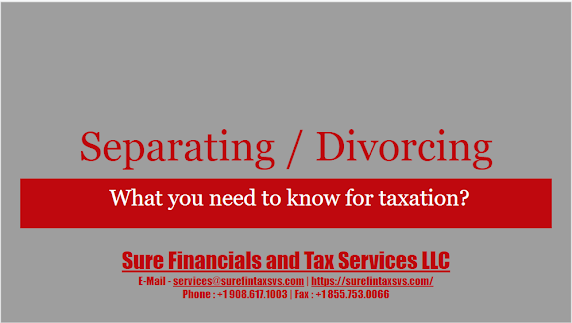Year-Round Tax Planning
Many individuals and companies, only worry about their tax in March and April. Cross their fingers for a large return. It sounds familiar, but this is not right from tax planning prospective.
By March and April, you might have taken few irreversible steps and those you cannot correct or reverse, as a result your tax might go up.
Everyone should plan their taxes year-round. You still need to think about taxes even if you have already filed your tax return. The tax you might owe or the rebate you anticipate in April may be impacted by what you do right now.
• Identify your filing status
• Know your Adjusted Gross Income (AGI)
• Check your withholding.
• Save for your retirement
• Benefit from tax credits and deductions
• Harvest your Tax-loss.
• Organize your tax records
Identify your filing status
Your filing status is considered for calculating your tax liability, standard deduction, and eligibility for certain credits. If you qualify for more than one filing status, consult a tax practitioner to determine which one will result in the least amount of tax. Your tax situation, including your filing status and your eligibility to claim specific tax credits and deductions, may change because of changes to your family life, such as marriage, divorce, birth, and death.
Know your Adjusted Gross Income (AGI)
When calculating your taxes, your AGI and tax rate are crucial variables. Your total yearly income (TYI), less any adjustments or deductions from it, is your AGI. In general, your tax rate and the amount of tax you pay increase with your AGI. Making adjustments during the year that lower your AGI can be a part of tax planning.
Check your withholding.
Due to the pay-as-you-go nature of federal taxes, the majority of your tax will need to be paid throughout the year as you generate the money. When your personal or financial information changes, use the IRS Withholding Calculator to verify your withholding. If you want to modify the amount of tax deducted from your paycheck, provide your employer an amended Form W-4. Your AGI may decrease if your withholding is increased or changed, which could have an impact on your tax obligation or anticipated refund. Every year, as well as if your financial or personal position changes, think about submitting a new Form W-4.
Save for your retirement
Opportunities for retirement savings can also reduce your AGI. Your take-home income and AGI are both decreased when you make contributions to a retirement plan at work. One more strategy to save for retirement and reduce your taxable income is to make contributions to a regular IRA account.
Benefit from tax credits and deductions
Any qualifying deductions from your AGI, including your standard deduction, must first be subtracted in order to determine your remaining taxable income. When you deduct tax credits from the amount of tax you owe, your tax is reduced. Your whole financial planning can benefit from tax planning. To make the filing season for you and your family less "taxing" the following year, start making plans now to uncover tax savings throughout the year.
Harvest your Tax-loss
Underperforming investments can be sold, exchanged for reasonably comparable investments, and the proceeds used to offset genuine investment gains. Tax-loss harvesting is the term for this procedure. As a result, less of your money might end up going to taxes and more might continue to be invested and generate income for you.
Organize your tax records
Create a system to keep all of your crucial information in one place. For electronic recordkeeping, you can either use a software application or labeled file cabinets to maintain paper records. As you receive tax records throughout the year, add them to your folders. It will be simpler to prepare your return if you have easy access to your data, and you might find deductions or credits that you might have missed. Whenever your address changes, let the IRS know. If your legal name changes, notify the Social Security Administration right once to prevent a holdup in the preparation of your tax return.






